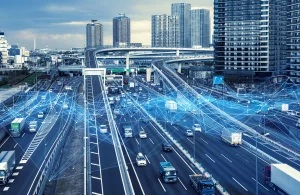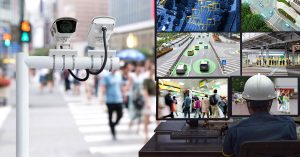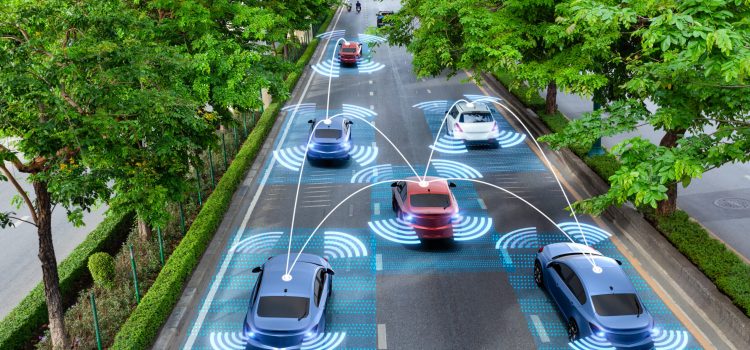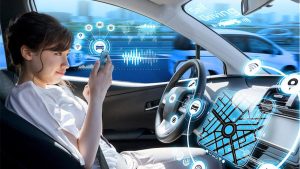
AI on Climate Change enhances predictive accuracy of climate models. The integration of artificial intelligence in climate change research has significantly bolstered the precision of climate models. Traditional models often struggled with the vast complexity and variability inherent in climate systems. However, AI algorithms, particularly those utilizing machine learning, can process enormous datasets far more efficiently than human capabilities allow. By recognizing patterns and anomalies in historical climate data, AI enhances the predictive accuracy of these models. This improved precision is critical for understanding future climate scenarios and developing effective mitigation strategies.
AI on Climate Change enables real-time data processing for models. Another groundbreaking application of AI in climate change research is its ability to process data in real-time. Climate models require continuous updates with the latest data to maintain their accuracy and relevance. AI systems can ingest and analyze data from a multitude of sources—such as satellite imagery, weather stations, and ocean buoys—in real-time. This capability ensures that models are always up-to-date, providing researchers and policymakers with the most current information to make informed decisions. The speed and efficiency of AI-driven data processing represent a monumental leap forward in our ability to understand and respond to climate change.
Machine Learning for Weather Prediction

AI on Climate Change enhances weather prediction accuracy. Weather prediction has always been a challenging endeavor, fraught with uncertainties and complexities. Machine learning, a subset of AI, has revolutionized this field by significantly enhancing the accuracy of weather forecasts. By training on vast amounts of historical weather data, machine learning models can identify subtle patterns and correlations that traditional methods might overlook. This leads to more reliable and precise weather predictions, which are crucial for agriculture, disaster preparedness, and daily life. The enhanced accuracy provided by AI-driven weather prediction models is a testament to the transformative power of technology in climate science.
Machine Learning models predict climate change impacts on weather patterns. Beyond short-term weather forecasting, machine learning models are also adept at predicting the long-term impacts of climate change on weather patterns. These models can simulate how rising temperatures, shifting precipitation patterns, and other climate variables will affect weather conditions in the future. By doing so, they provide valuable insights into potential changes in extreme weather events, such as hurricanes, droughts, and heatwaves. Understanding these impacts is essential for developing adaptation strategies and mitigating the adverse effects of climate change on human societies and natural ecosystems.
AI in Renewable Energy Optimization
AI on Climate Change enhances renewable energy efficiency. The transition to renewable energy sources is a cornerstone of global efforts to combat climate change. AI plays a pivotal role in enhancing the efficiency of renewable energy systems. For instance, AI algorithms can optimize the operation of wind turbines and solar panels by adjusting their orientation and performance based on real-time weather conditions and energy demand. This optimization ensures that renewable energy systems operate at their maximum potential, reducing waste and increasing the overall efficiency of energy production. The integration of AI in renewable energy systems is a game-changer, making sustainable energy more viable and cost-effective.
AI on Climate Change predicts optimal renewable energy deployment. In addition to optimizing existing systems, AI also aids in the strategic deployment of new renewable energy infrastructure. By analyzing geographic, meteorological, and socio-economic data, AI can identify the most suitable locations for wind farms, solar arrays, and other renewable energy installations. This predictive capability ensures that investments in renewable energy are directed to areas where they will be most effective, maximizing their impact on reducing greenhouse gas emissions. The strategic deployment of renewable energy, guided by AI insights, is crucial for accelerating the transition to a sustainable energy future.
AI for Climate Data Analysis
AI on Climate Change enhances data analysis precision. The sheer volume and complexity of climate data present significant challenges for researchers. AI addresses these challenges by enhancing the precision of data analysis. Advanced AI algorithms can sift through vast datasets, identifying trends, correlations, and anomalies with unparalleled accuracy. This precision is vital for understanding the nuances of climate change and developing targeted interventions. By leveraging AI, researchers can gain deeper insights into the mechanisms driving climate change, leading to more effective and informed decision-making.
AI on Climate Change accelerates research breakthroughs. The speed at which AI can process and analyze data also accelerates the pace of research breakthroughs. Traditional methods of data analysis are often time-consuming and labor-intensive, slowing the progress of climate research. AI, however, can perform complex analyses in a fraction of the time, enabling researchers to test hypotheses and validate findings more rapidly. This acceleration is crucial for addressing the urgent challenges posed by climate change. The ability of AI to expedite research processes is transforming the field of climate science, driving innovation and discovery at an unprecedented rate.
Deep Learning in Climate Science

AI on Climate Change enhances climate prediction models. Deep learning, a specialized branch of machine learning, is particularly effective in enhancing climate prediction models. Deep learning algorithms excel at processing complex, high-dimensional data, making them well-suited for modeling the intricate dynamics of the Earth’s climate system. By training on vast datasets, deep learning models can improve the accuracy and reliability of climate predictions. These enhanced models are essential for anticipating future climate conditions and informing policy decisions aimed at mitigating the impacts of climate change.
AI on Climate Change identifies patterns in climate data. One of the most powerful capabilities of deep learning is its ability to identify patterns in climate data that may not be apparent to human researchers. These patterns can reveal critical insights into the drivers of climate change, such as the interactions between atmospheric, oceanic, and terrestrial systems. By uncovering these hidden patterns, deep learning contributes to a more comprehensive understanding of climate dynamics. This deeper understanding is crucial for developing effective strategies to combat climate change and protect our planet for future generations.





































